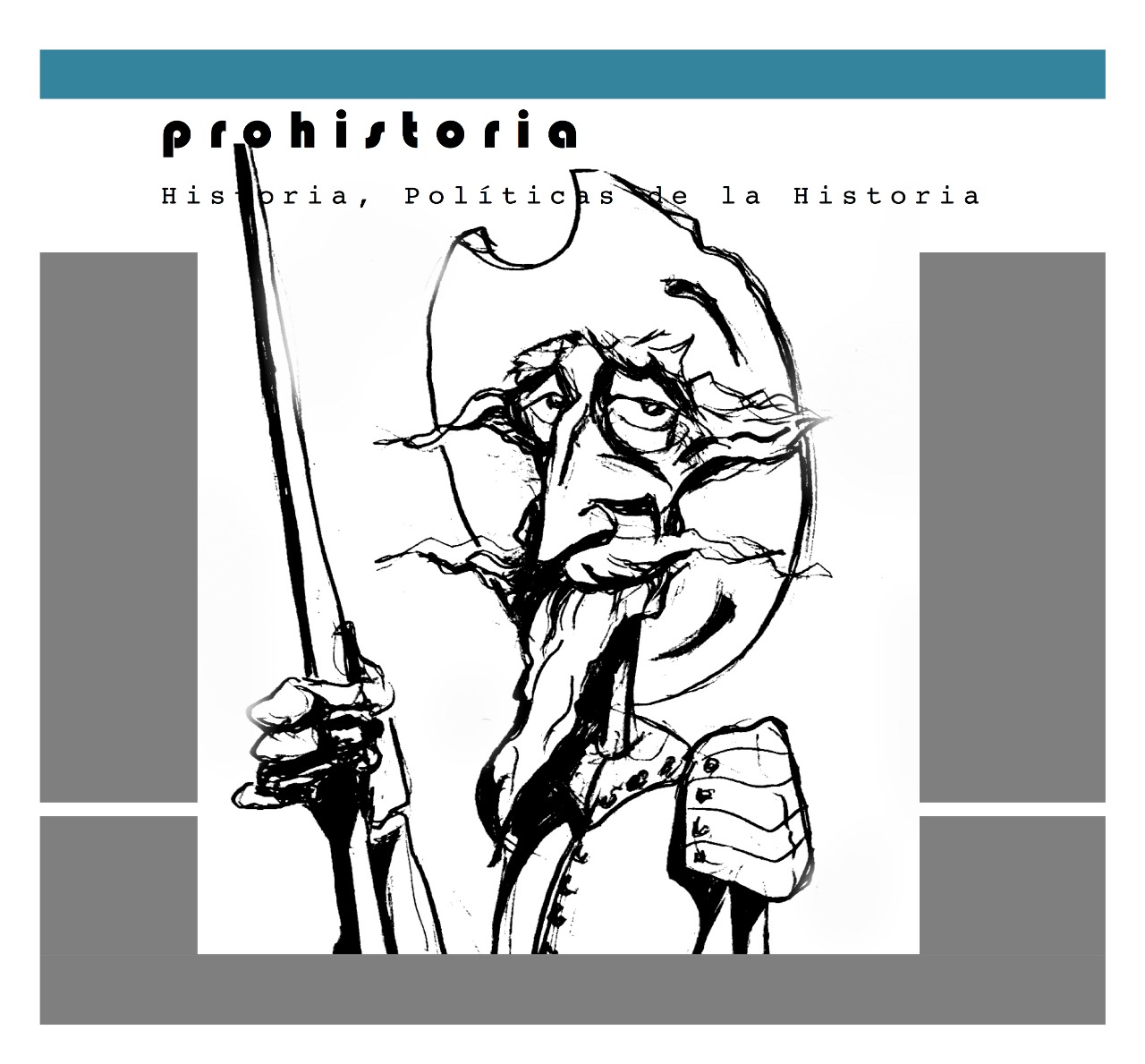Melancholy in Novo-Hispanic Mexico. The Florilegio medicinal of Juan de Esteyneffer
DOI:
https://doi.org/10.35305/prohistoria.vi41.1870Keywords:
Melancholy, Jesuits, History of Medicine , History of America, 18th CenturyAbstract
The process of domination and Christianisation of the indigenous communities developed by the European monarchies had an important ally in the Society of Jesus. In this sense, the cure of souls was closely linked to the medical care provided to local communities. Juan de Esteyneffer's Florilegio draws from this tradition by presenting a complex medical catalogue of the most common diseases in the neo-Galenic thought of the 17th and 18th centuries, such as melancholy, but offering solutions from the Novo-Hispanic sphere.
Downloads
References
Anzures y Bolaños, Mª del C. (2001). Entrada sobre Steinhöfer, Jan. En O’ Neill, C. E.; Domínguez, J. Mª. Diccionario histórico de la Compañía de Jesús: biográfico – temático (pp. 3633-3634.). Universidad Pontificia de Comillas.
Artschwager, K. (1977). The Florilegio Medicinal: Source of Southwest Ethnomedicine. Ethnohistory, 24 (3), 251-259.
Barrera, A. (2002). Local Herbs, Global Medicines. Commerce, Knowledge, and Commodities in Spanish America. En: Smith P. H.; Findlen P. (eds.). Merchants & Marvels. Commerce, Science, and Art in Early Modern Europe (pp. 163-181). Routledge.
Bartra, R. (2001). Cultura y melancolía. Las enfermedades del alma en la España del Siglo de Oro. Anagrama.
Bell, M. (2014). Melancholy. The Western Malady. Cambridge University Press.
Betrán, J. L. (2010). El Bonete y la Pluma: la producción impresa de los autores jesuitas españoles durante los siglos XVI y XVII. En Betrán, J. L. (Ed.). La Compañía de Jesís y su proyección mediática en el mundo hispánico durante la Edad Moderna (pp. 23-76). Sílex.
Bolaños, M. (2015). Tiempos de melancolía. En Bolaños, M. (et al.). Tiempos de melancolía. Creación y desengaño en la España del Siglo de Oro (pp. 14-33). Obra Social “la Caixa”, Secretaría General Técnica del Ministerio de Educación, Cultura y Deporte, Turner.
Burrieza Sánchez, J. (2004a). Los misioneros en la Monarquía. En Egido, T. (Coord.). Los jesuitas en España y en el mundo hispánico (pp. 179-224). Marcial Pons, Ediciones de Historia, S.A.
Burrieza Sánchez, J. (2004b). Retrato del jesuita. En Egido, T. (Coord.). Los jesuitas en España y en el mundo hispánico (pp. 27-43). Marcial Pons, Ediciones de Historia, S.A.
Carrera, E. (2010a). Introduction Madness and Melancholy in Sixteenth- and Seventeenth-Century Spain: New Evidence, New Approaches. Bulletin of Spanish Studies, 87 (8), 1-15.
Carrera, E. (2010b). Understanding Mental Disturbance in Sixteenth and Seventeenth Century Spain: Medical Approaches. Bulletin of Spanish Studies,
(8), 105-136.
Chávez Guzman, M. (2013). Cuerpo, enfermedad y medicina en la cosmología maya del Yucatán colonial. Tesis doctoral, Universidad Nacional Autónoma de México. https://www.academia.edu/44528841/Cuerpo_enfermedad_y_medicina_en_la_cosmolog%C3%ADa_maya_del_Yucat%C3%A1n_Colonial
Echeverría García, J. (2007). La construcción del cuerpo del “otro”: el loco, el miedoso y el extranjero entre los antiguos nahuas. Cuicuilco. Revista de ciencias antropológicas, 24 (70), 139-170.
Egido, T. (Coord.) (2004). Los jesuitas en España y en el mundo hispánico. Marcial Pons, Ediciones de Historia, S.A.
Gambin, F. (2008). Azabache. El debate sobre la melancolía en la España de los Siglos de Oro. Biblioteca Nueva.
Gambin, F. (2010). De una extraña melancolía. Beber y tomar oro en La Dorotea de Lope de Vega. Studia Aurea: Revista de Literatura Española y Teoría Literaria del Renacimiento y Siglo de Oro, 4, 269-295.
Gowland, A. (2006). The worlds of Rennaissance melancholy. Robert Burton in context. Cambridge University Press.
Gowland, A. (2021). Mind/Brain. En Leong, E. y Stein, C. A cultural History of Medicine. In the Renaissance (pp. 163-188). Bloomsbury Academic.
https://www.repository.cam.ac.uk/items/2356abcf-42eb-4b55-8b20-a889a4c90536
Huguet-Termes, T. (2001). New World Materia Medica in Spanish Renaissance Medicine: From Scholarly Reception to Practical Impact. Medical History, 45, 359-376.
Huguet-Termes, T. y Arrizabalaga, J. (2010). Hospital Care for the Insane in Barcelona, 1400–1700. Bulletin of Spanish Studies, 87 (8), 81-104.
Klibansky, R., Panofsky, E., Saxl, F. (1991). Saturno y la
melancolía. Estudios de historia de la filosofía de la naturaleza, la religión
y el arte. Alianza Editorial.
Kroupa, S. (2019). Georg Joseph Kamel (1661-1706): A Jesuit Pharmacist at the Frontiers of Colonial Empires. Tesis doctoral, Universidad de Cambridge.
Llamas Camacho, E. G. y Ariza Calderón, T. (2019). Piedras bezoares entre dos mundos: de talismán a remedio en el septentrión novohispano, siglos XVI-XVIII. Historia Crítica, 73, 43-64.
López Piñero, J. M. y López Terrada, M. L. (1997). La influencia española en la introducción en Europa de las plantas americanas (1493-1623). Instituto de Estudios Documentales e Históricos sobre la Ciencia Uuniversitat de València - C. S. I. C.
Márquez Ruiz, M. A. J. (2006). Epizootias, Zoonosis y Epidemias El intercambio de infecciones y parasitosis entre el Viejo y el Nuevo Mundo. Tesis doctoral, Universidad de León. Bulería Universidad de León. https://buleria.unileon.es/handle/10612/15745
Orobitg, C. (2009). El sistema de las emociones: la melancolía en el siglo
de oro español. En Tausiet, M. y Amelang, J. (Eds.), Accidentes del alma. Las emociones en la Edad moderna (pp. 71-98). Abada Editores.
Pardo-Tomás, J. (2015). Making Natural History in New Spain, 1525-1590. En Wendt, H. (Ed.), The Globalization of Knowledge in the Iberian Colonial World (pp. 29-51). Max Planck Research Library for the History and Development of Knowledge.
Porter, R. (1987). Mind-Forg’d Manacles. A history of madness in England from the Restoration to the Regency. The Athlone Press.
Porter, R. (1991). George Cheyne: the English Malady (1733). Routledge.
Ramírez Luengo, J. L. (2020). Explicar lo desconocido: la incorporación discursive de los indigenismos en el Florilegio Medicinal de Juan de Esteyneffer. Nueva Revista de Filología Hispánica, LXVIII(1), 255-268. https://doi.org/10.24201/nrfh.v68i1.3588
Ramos, C. (2022). Bedlam in the New World. A Mexican Madhouse in the Age of Enlightenment. The University of North Carolina Press.
Scull, A. (2009). Hysteria. The biography. Oxford University Press.
Torales Pacheco, M. C. (2005). Los jesuitas novohispanos y la naturaleza en el siglo XVIII. En Millones Figueora, L. y Ledezma, D. (Eds.), El saber de los jesuitas, historias naturales y el Nuevo Mundo (pp. 195-224). TECI.
Villegas, P. (2009). El tochómitl, un artículo de comercio entre la Nueva España y la provincia de Yucatán. Siglo XVI. En Long Towell, J. y Attolini Lecón, A. (Coords.), Caminos y mercados de México (pp. 311-324). Universidad Nacional Autónoma de México, Instituto de Investigaciones Históricas, Instituto Nacional de Antropología e Historia.
Published
How to Cite
Issue
Section
License
Copyright (c) 2024 Julen Ibarburu Antón

This work is licensed under a Creative Commons Attribution-NonCommercial-ShareAlike 4.0 International License.
- Authors retain copyright and grant the journal right of first publication with the work simultaneously licensed under Creative Commons Attribution 4.0 International License.
- Authors are able to enter into separate, additional contractual arrangements for the non-exclusive distribution of the journal's published version of the work (e.g., post it to an institutional repository or publish it in a book), with an acknowledgement of its initial publication in this journal.
Copyright of this issue © Prohistoria. Historia, políticas de la historia



















